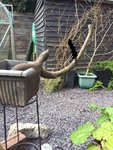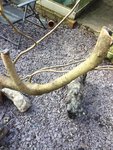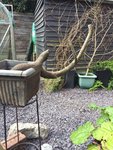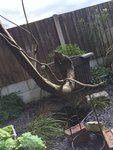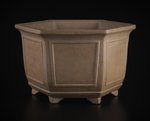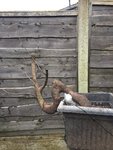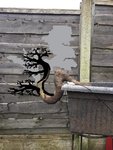Wizeeerrrddd
Mame
Collected this sycamore last October, i'm wondering if any of you have any ideas for the design long term.
I've thinking of cutting back the branch in the first picture, eventually. I feel it cuts the flow of the trunk off too much in the angle i'm thinking for the front which hides the inverse taper.
what do you think?
I'm unsure what to do with the long thin branches though. Maybe thread graft them in the future.
I don't want them to bulge too much though. So I could cut them back and start from a clean trunk or shorten to the first node.
Theres quite a few buds coming through so ill post again at the end of summer.
I've thinking of cutting back the branch in the first picture, eventually. I feel it cuts the flow of the trunk off too much in the angle i'm thinking for the front which hides the inverse taper.
what do you think?
I'm unsure what to do with the long thin branches though. Maybe thread graft them in the future.
I don't want them to bulge too much though. So I could cut them back and start from a clean trunk or shorten to the first node.
Theres quite a few buds coming through so ill post again at the end of summer.

